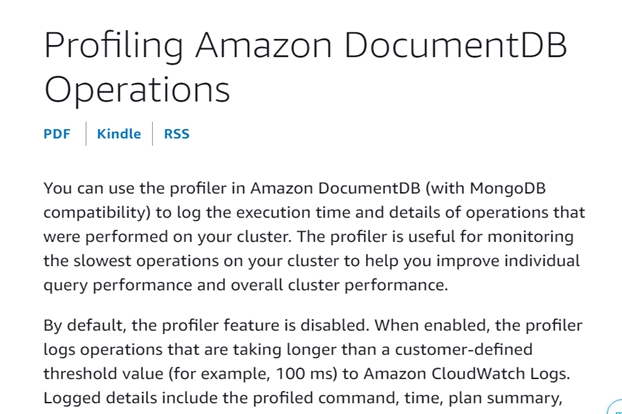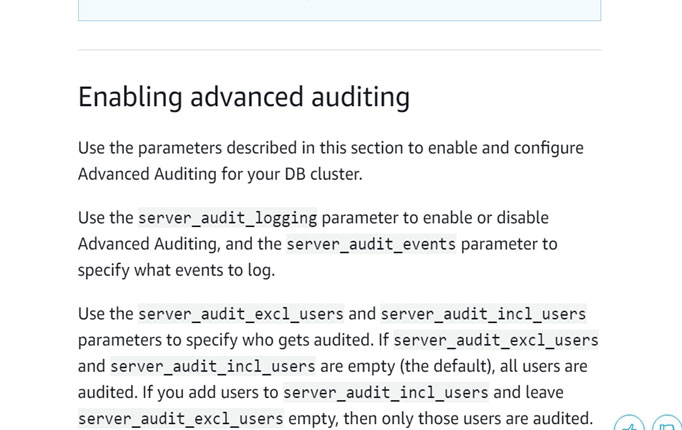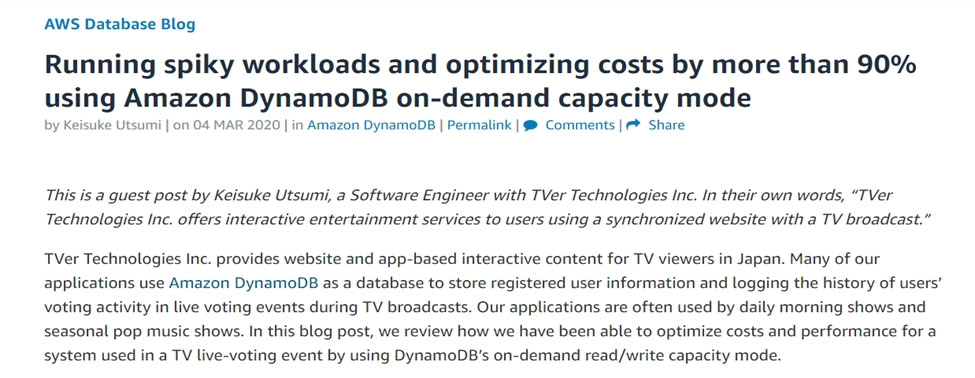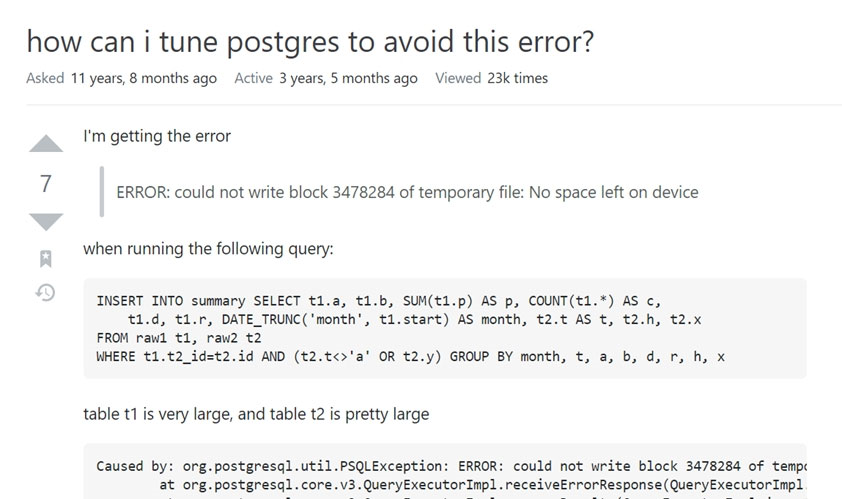A marketing company is using Amazon DocumentDB and requires that database audit logs be enabled. A Database Specialist needs to configure monitoring so that all data definition language (DDL) statements performed are visible to the Administrator. The Database Specialist has set the audit_logs parameter to enabled in the cluster parameter group.
What should the Database Specialist do to automatically collect the database logs for the Administrator?
A
Reference:
https://docs.aws.amazon.com/documentdb/latest/developerguide/profiling.html
A company is looking to move an on-premises IBM Db2 database running AIX on an IBM POWER7 server. Due to escalating support and maintenance costs, the company is exploring the option of moving the workload to an Amazon Aurora PostgreSQL DB cluster.
What is the quickest way for the company to gather data on the migration compatibility?
D
Reference:
https://docs.aws.amazon.com/SchemaConversionTool/latest/userguide/Schema-Conversion-Tool.pdf
An ecommerce company is using Amazon DynamoDB as the backend for its order-processing application. The steady increase in the number of orders is resulting in increased DynamoDB costs. Order verification and reporting perform many repeated GetItem functions that pull similar datasets, and this read activity is contributing to the increased costs. The company wants to control these costs without significant development efforts.
How should a Database Specialist address these requirements?
B
An IT consulting company wants to reduce costs when operating its development environment databases. The company's workflow creates multiple Amazon
Aurora MySQL DB clusters for each development group. The Aurora DB clusters are only used for 8 hours a day. The DB clusters can then be deleted at the end of the development cycle, which lasts 2 weeks.
Which of the following provides the MOST cost-effective solution?
D
A company has multiple applications serving data from a secure on-premises database. The company is migrating all applications and databases to the AWS
Cloud. The IT Risk and Compliance department requires that auditing be enabled on all secure databases to capture all log ins, log outs, failed logins, permission changes, and database schema changes. A Database Specialist has recommended Amazon Aurora MySQL as the migration target, and leveraging the Advanced
Auditing feature in Aurora.
Which events need to be specified in the Advanced Auditing configuration to satisfy the minimum auditing requirements? (Choose three.)
ACE
Reference:
https://docs.aws.amazon.com/AmazonRDS/latest/AuroraUserGuide/AuroraMySQL.Auditing.html
A gaming company has recently acquired a successful iOS game, which is particularly popular during the holiday season. The company has decided to add a leaderboard to the game that uses Amazon DynamoDB. The application load is expected to ramp up over the holiday season.
Which solution will meet these requirements at the lowest cost?
C
Reference:
https://aws.amazon.com/blogs/database/running-spiky-workloads-and-optimizing-costs-by-more-than-90-using-amazon-dynamodb-on-demand- capacity-mode/?nc1=b_rp
A company's Security department established new requirements that state internal users must connect to an existing Amazon RDS for SQL Server DB instance using their corporate Active Directory (AD) credentials. A Database Specialist must make the modifications needed to fulfill this requirement.
Which combination of actions should the Database Specialist take? (Choose three.)
CDF
A Database Specialist is performing a proof of concept with Amazon Aurora using a small instance to confirm a simple database behavior. When loading a large dataset and creating the index, the Database Specialist encounters the following error message from Aurora:
ERROR: cloud not write block 7507718 of temporary file: No space left on device
What is the cause of this error and what should the Database Specialist do to resolve this issue?
C
Reference:
https://serverfault.com/questions/109828/how-can-i-tune-postgres-to-avoid-this-error
A financial company wants to store sensitive user data in an Amazon Aurora PostgreSQL DB cluster. The database will be accessed by multiple applications across the company. The company has mandated that all communications to the database be encrypted and the server identity must be validated. Any non-SSL- based connections should be disallowed access to the database.
Which solution addresses these requirements?
D
Reference:
https://forums.aws.amazon.com/message.jspa?messageID=734076
A company is using 5 TB Amazon RDS DB instances and needs to maintain 5 years of monthly database backups for compliance purposes. A Database
Administrator must provide Auditors with data within 24 hours.
Which solution will meet these requirements and is the MOST operationally efficient?
B